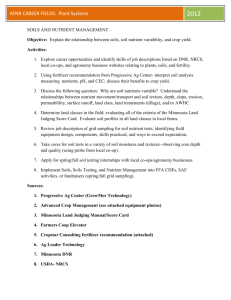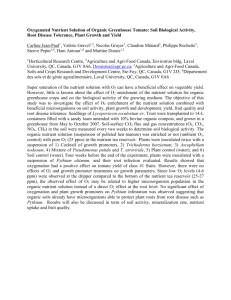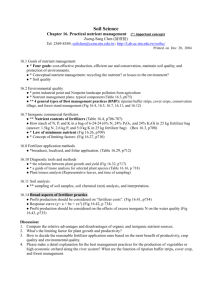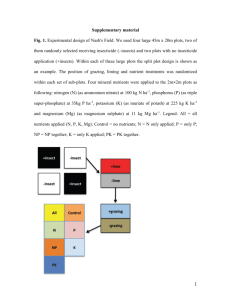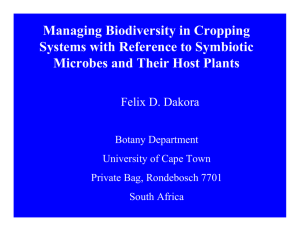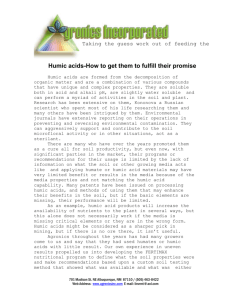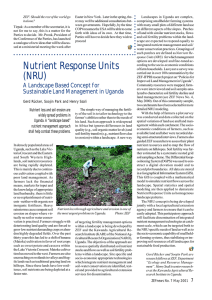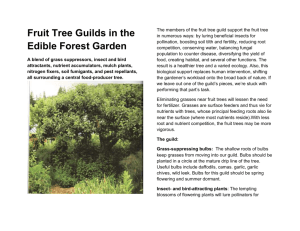Abstract for APS meeting
advertisement
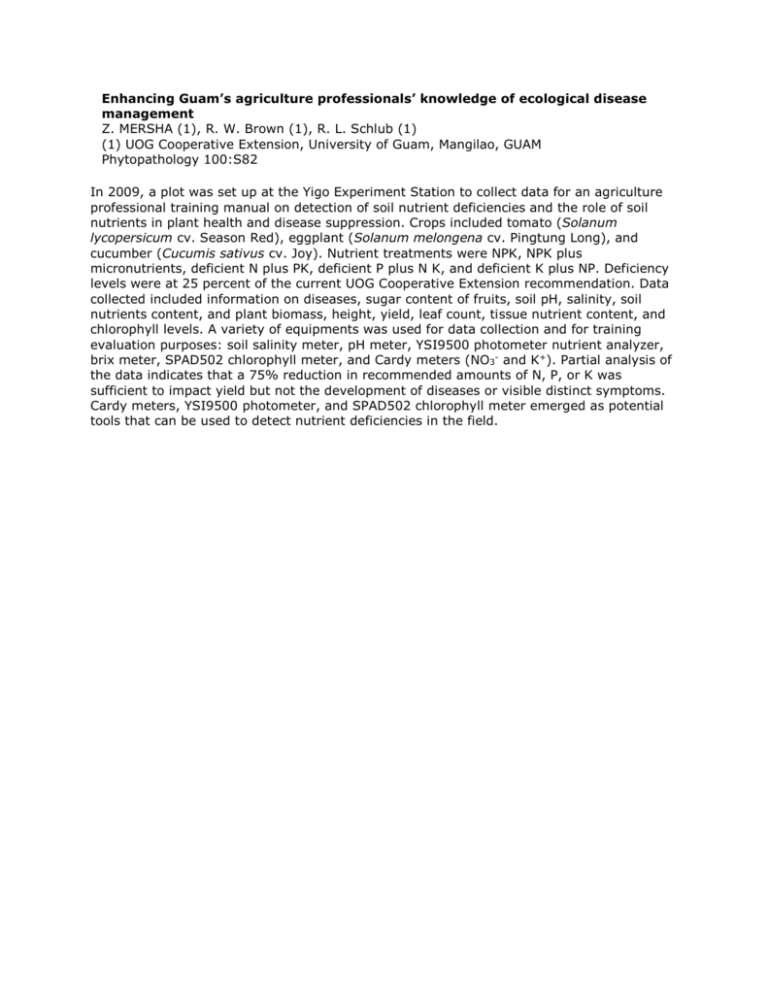
Enhancing Guam’s agriculture professionals’ knowledge of ecological disease management Z. MERSHA (1), R. W. Brown (1), R. L. Schlub (1) (1) UOG Cooperative Extension, University of Guam, Mangilao, GUAM Phytopathology 100:S82 In 2009, a plot was set up at the Yigo Experiment Station to collect data for an agriculture professional training manual on detection of soil nutrient deficiencies and the role of soil nutrients in plant health and disease suppression. Crops included tomato (Solanum lycopersicum cv. Season Red), eggplant (Solanum melongena cv. Pingtung Long), and cucumber (Cucumis sativus cv. Joy). Nutrient treatments were NPK, NPK plus micronutrients, deficient N plus PK, deficient P plus N K, and deficient K plus NP. Deficiency levels were at 25 percent of the current UOG Cooperative Extension recommendation. Data collected included information on diseases, sugar content of fruits, soil pH, salinity, soil nutrients content, and plant biomass, height, yield, leaf count, tissue nutrient content, and chlorophyll levels. A variety of equipments was used for data collection and for training evaluation purposes: soil salinity meter, pH meter, YSI9500 photometer nutrient analyzer, brix meter, SPAD502 chlorophyll meter, and Cardy meters (NO3- and K+). Partial analysis of the data indicates that a 75% reduction in recommended amounts of N, P, or K was sufficient to impact yield but not the development of diseases or visible distinct symptoms. Cardy meters, YSI9500 photometer, and SPAD502 chlorophyll meter emerged as potential tools that can be used to detect nutrient deficiencies in the field.

